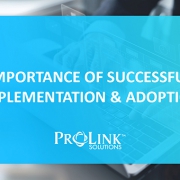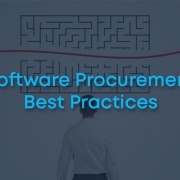Importance of Successful Implementation & Adoption
In the realm of affordable housing, where resources are often limited and demand is high, the role of technology in streamlining processes and improving efficiency cannot be overstated. State housing finance agencies (HFAs) play a critical role in addressing the housing needs of low- and moderate-income individuals and families. For software companies providing solutions to these agencies, as well as for the agencies themselves, it is imperative to understand the importance of successful implementation and adoption of technology in this sector.
Importance of Successful Implementation
Successful implementation of software solutions in the affordable housing industry is crucial for several reasons:
- Efficiency and Streamlined Processes: Implementing software can automate manual tasks, streamline workflows, and reduce the administrative burden on housing agencies. This efficiency allows agencies to serve their constituents more effectively as well as allocate resources where they are needed most.
- Data Management and Reporting: Software solutions enable HFAs to collect, manage, and analyze data more effectively. This data-driven approach helps agencies make informed decisions, track performance metrics, and demonstrate accountability to stakeholders.
- Compliance and Regulatory Requirements: The affordable housing industry is subject to numerous regulatory requirements and reporting obligations. A well-implemented software solution can help HFAs stay compliant with regulations, mitigate risks, and avoid costly penalties.
Key Considerations for Successful Implementation
When implementing software solutions for state HFAs, several key considerations can help ensure success:
- Customization and Flexibility: Every housing agency operates differently, with unique processes and requirements. Therefore, it is essential for software solutions to be customizable and adaptable to accommodate the specific needs of each agency.
- Training and Support: Adequate training and ongoing support are essential for successful adoption of software solutions. Housing agency staff members need to be trained on how to use the software effectively and provided with ongoing support to address any issues or questions that may arise. It is normal and expected that subsequent training or configuration needs will arise over time as staff and business processes evolve.
- Integration with Existing Systems: Many housing agencies already have existing systems and databases in place. It is important for new software solutions to integrate seamlessly with these systems to minimize disruption and ensure data consistency.
Importance of Adoption
Successful implementation is only part of the battle; achieving widespread adoption of software solutions is also incredibly important. Without user buy-in and engagement, even the most advanced technology will not deliver its full potential benefits.
Here are a few key ways to help encourage more widespread adoption:
- User-Friendly Interface: Software solutions should have an intuitive, user-friendly interface that makes it easy for housing agency staff members to navigate and use the system effectively.
- Stakeholder Engagement: Involving key stakeholders, including agency staff, management, and external partners, in the implementation process can help foster buy-in and ownership of the new technology.
- Clear Communication and Training: Clear communication about the purpose and benefits of the software solution, along with comprehensive training programs, can help ensure that users understand how the technology will improve their workflows and productivity.
In conclusion, successful implementation and adoption of software solutions are essential for state HFAs to effectively address the complex challenges of the affordable housing industry. By considering key factors such as customization, training, integration, and user engagement, software companies can help housing agencies leverage technology to improve efficiency, compliance, and outcomes for low- and moderate-income individuals and families.
If you are interested in learning more about ProLink Solutions’ approach to implementation and adoption, you can attend our webinar on Wednesday, March 6th at 3 p.m. ET titled “Implementation & Adoption Retrospective.” Click here to register for the webinar.




